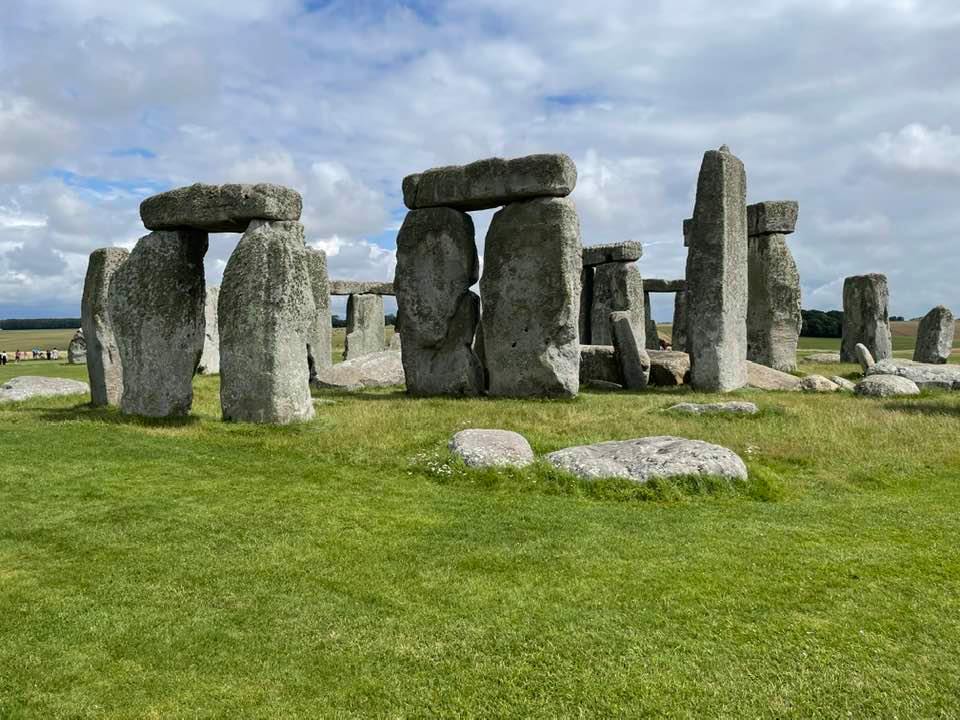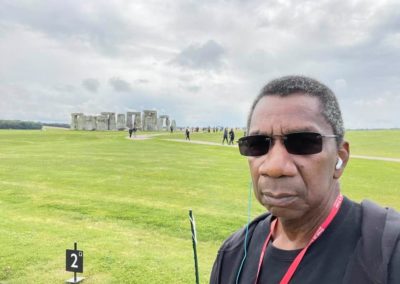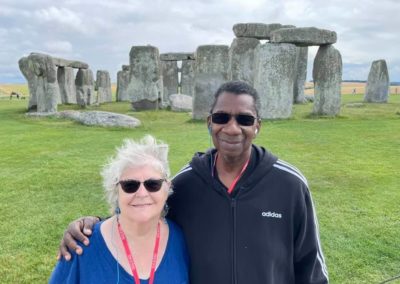We came. We saw. We felt the energy. Alas, the mystery remains unsolved.
Stonehenge has been designated a World Heritage Site, along with Avebury, which lies to its north. UNESCO describes their importance:
The Stonehenge, Avebury, and Associated Sites World Heritage Site is internationally important for its complexes of outstanding prehistoric monuments. Stonehenge is the most architecturally sophisticated prehistoric stone circle in the world, while Avebury is the largest in the world. Together with inter-related monuments and their associated landscapes, they help us to understand Neolithic and Bronze Age ceremonial and mortuary practices. They demonstrate around 2000 years of continuous use and monument building between c. 3700 and 1600 BC. As such they represent a unique embodiment of our collective heritage.
Stonehenge is the most architecurally complex stone circle ever to have been discovered, and the only lintelled stone circle known in the world. (lintels are horizontal stones that connect two vertical stones). At this point in our understanding, experts believe Stonehenge was built between 3000 BCE and 2000 BCE. The site consists of an outside ring of vertical standing stones about 13 feet high, seven feet wide, topped by horizontal lintel stones that connect them. Inside the outer ring is a smaller ring of bluestones, and inside these are more trilithons (the word given to two vertical stones connected by a horizontal stone called a lintel). At the summer solstice, the whole monument is oriented toward the sunrise, and rituals are held by followers of the old religions.
One of the most mysterious aspects of the site is how the stones were transported and put in place. The stones have been identified and their origins determined; some came from 15 miles away, and the bluestones were brought 150 miles from the Preseli Hills area. The monument uses precise interlocking joints, which have not been seen elsewhere.
Other questions remain, of course. Why was Stonehenge erected? How was it used over time? As fragments of bone have been discovered in the surrounding area, many believe Stonehenge was a burial site. It may also have functioned as a calendar.
While Stonehenge is the most well-known stone circle, it is far from the only one. There are a thousand stone circles in Great Britain, and others were constructed during the same time period in Scandinavia. Isreal has the Atlit Yam site, constructed betwee 6300~6900 BCE, and the nearby Gilgal Refaim site, which has been dated from 3000~4000 BCE. Bronze Age monuments have been found in Hong Kong, Senegal and Gambia.








0 Comments